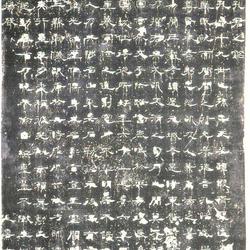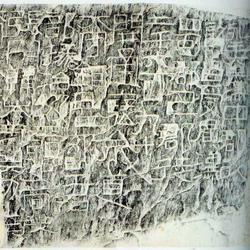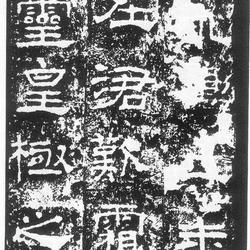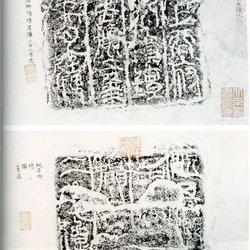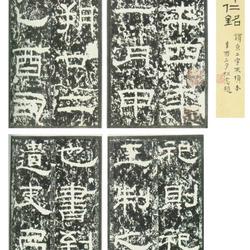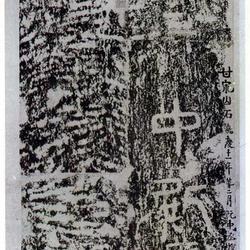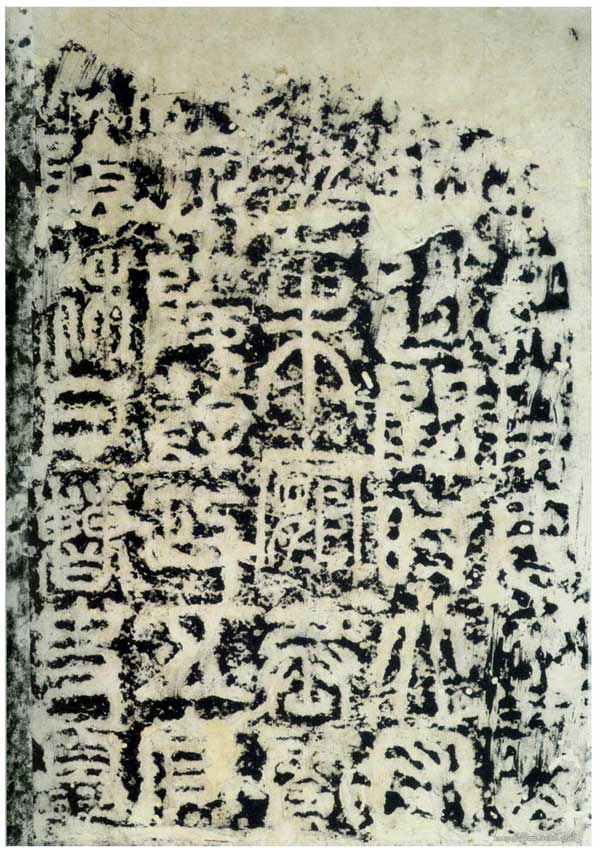
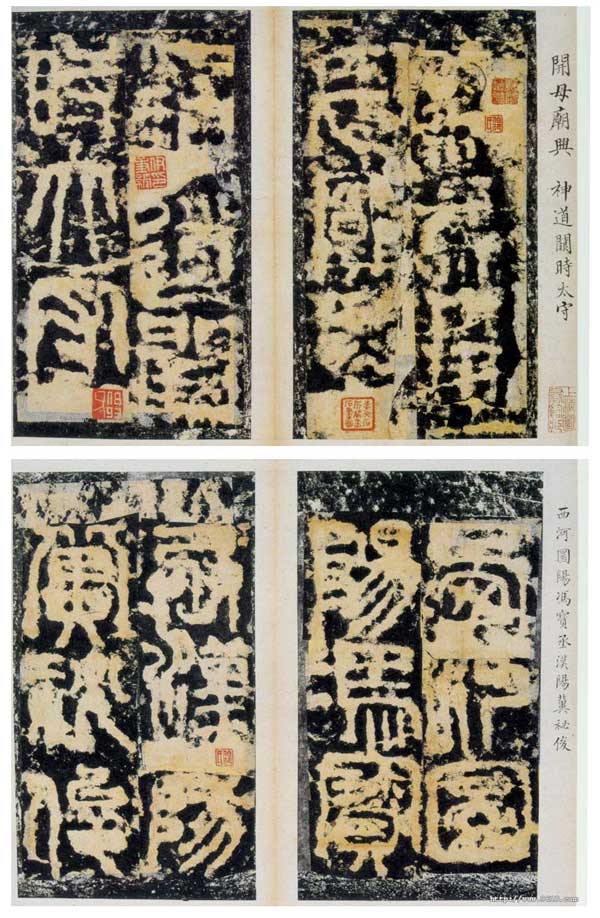
Inscribed in the third year of Yanguang (123) of the Eastern Han Dynasty, the palace was built with stone strips. The ruins of Kaimu Temple in Songshan Mountain, Dengfeng County, Henan Province. The original name of "Kai Mu" was "Qi Mu" to avoid the name taboo of Emperor Jing of the Han Dynasty. She was named the son of Xia Yu to remember Xia Yu's deeds of controlling floods. It is one of the "Three Towers of Songshan". The inscription is divided into two sections. "Jinshi Cuibian" records: each section is one foot eight inches high and eight feet nine inches wide. There are a total of twenty lines, with twelve characters in the full line. The title in the lower paragraph is ten lines, with seven characters in the full line. The seal script of "Kaimu Temple Stone Que Inscription" has simple calligraphy and is a famous seal script of the Han Dynasty. It is more rigorous than the "Shaoshi Shique Inscription" and more compact than Li Si's carvings, but the simplicity, richness and beauty of Qin's seal can still be vaguely seen. The contemporary Kang Youwei's "Guangyi Zhou Shuangji" calls it "dense and vigorous" and it is not an exaggeration to praise it.
The stone quality of this Que is poor and it has been around for a long time, so there are many defects. The one with the lower right corner of the word "Xuan" intact in "Essays on the School Stele" is a rubbing from the Ming Dynasty. Shanghai Yiyuan Zhenshangshe has a photocopy of the book. Feng Zhipeng of the Qing Dynasty commented on this inscription: "Han Dynasty steles are all official scripts, and there are very few seal scripts. This and the "Shaoshi Inscription" were actually written by one hand at the same time. The seal script is round and full, although it is extremely peeling, but it has an air of ease. The writing style is fat and thin, and also There are pauses and setbacks, similar to Han and Miao seals."

